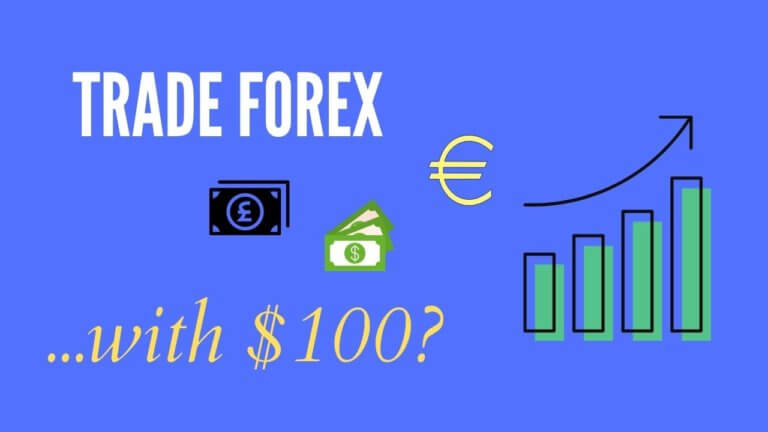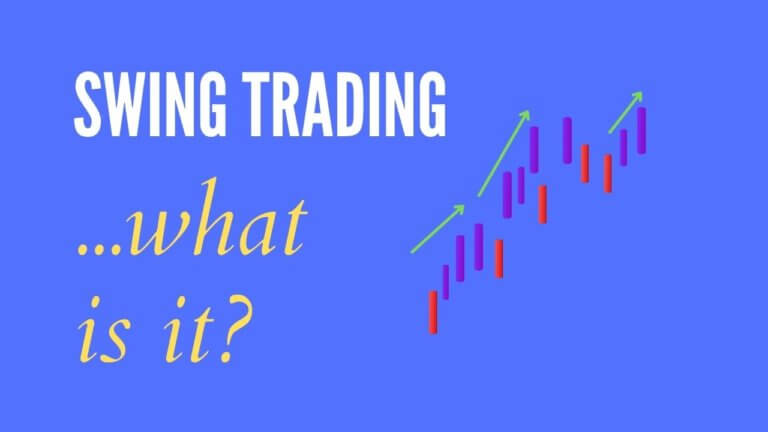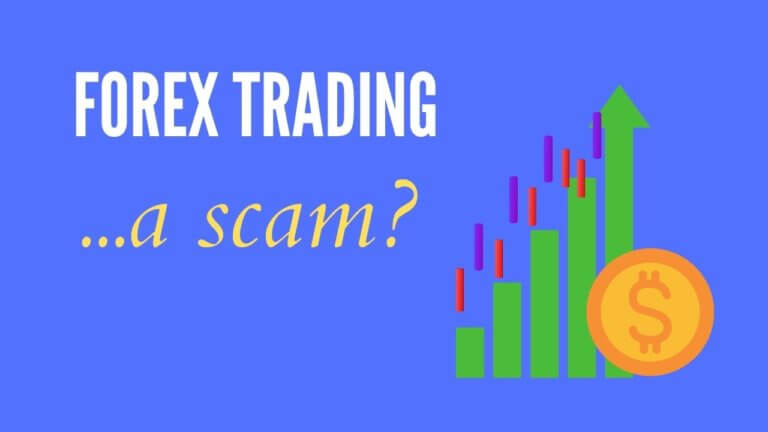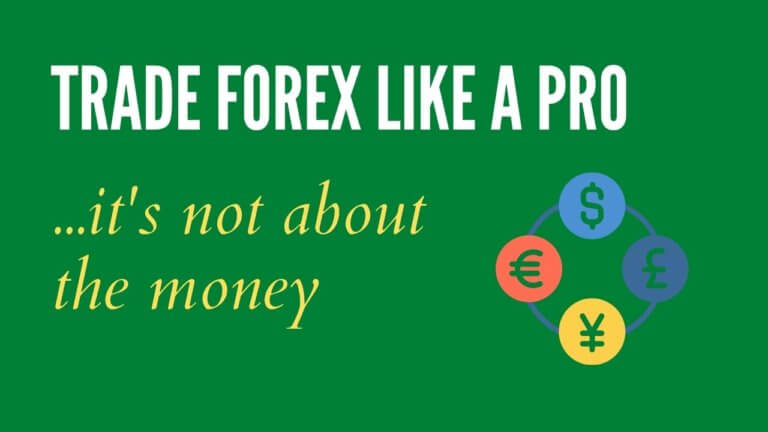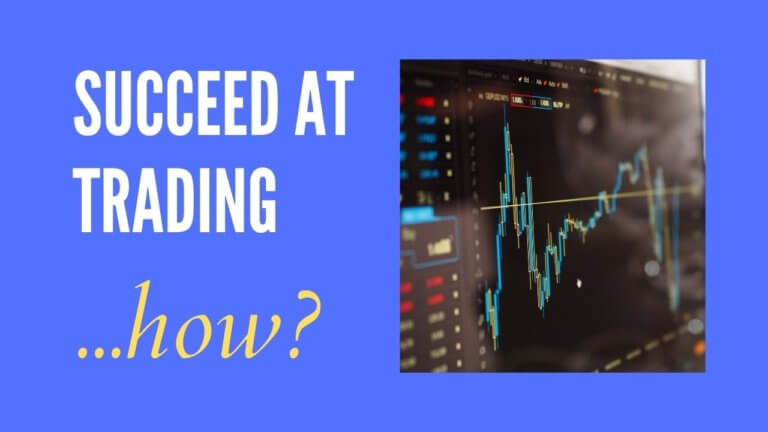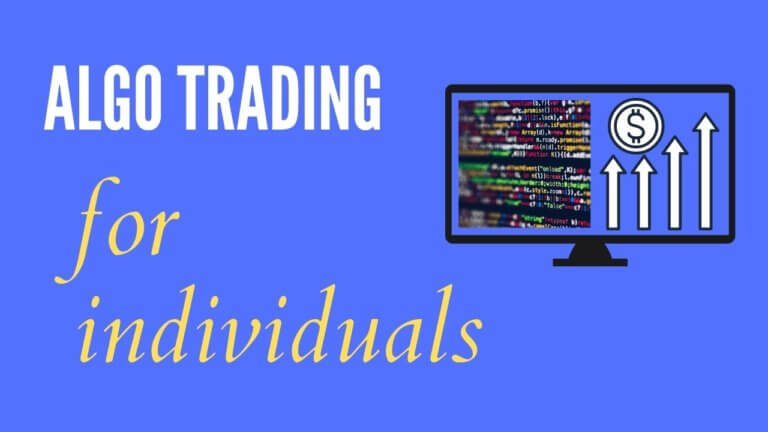Is Forex Trading Legit? Here’s What You Need To Know
If you’re considering forex trading as a way of making money, read this.
HDS is reader-supported and we may receive compensation from affiliate links on this site at no extra cost to you—learn more Please Note: Trading financial instruments, including forex, is risky—please read our risk disclaimer
Yes—forex trading is a legitimate way of making money.
But, it’s not easy, and there are many forex trading systems that are not legitimate—scams—that should be avoided.
And unfortunately, many newcomers to forex trading have unrealistic expectations about how it works and how profitable it can be. Without proper guidance or mentorship, forex trading can be hard!
In this article, we’ll look at an honest introduction to forex trading—the forex market, how forex trading works, whether it can be profitable, and what to look for to avoid forex scams.
Contents
- What is the forex market?
- Who’s involved in the forex market?
- How forex trading works
- The benefits of trading forex
- Is forex trading profitable?
- How much can you make trading forex?
- Beware of forex scams
- Choosing a forex broker
- Conclusion
What is the forex market?
Think back to the last time that you traveled to a foreign country.
Chances are, you exchanged some of your own country’s currency for the foreign country’s currency during that trip.
Or, think about the last time you bought a TV or other device from your local store.
Depending on where you live, there’s a good chance that some, or most, of the device was manufactured—or parts sourced from—overseas.
These are two everyday examples of the need for foreign currency exchange—forex.
Forex transactions happen all the time—there’s 24/7 weekday trading in forex—we need it for travel, for buying and selling goods (and services) between countries, for cross-country financial investments, or simply for speculation.
The forex market is fundamental to the way that international economies operate and the way in which goods and services flow around the world.
The forex market is also the largest and most liquid financial market in the world, with an estimated daily trading volume of more than USD 6 trillion in 2019, around 30% higher than it was in 20161.
And unlike most stock markets, the forex market is decentralized—there isn’t a single physical location for buying and selling currencies.
Rather, currencies are bought and sold directly between different parties, across a variety of channels.
Given its non-centralized, direct form of trading between parties, the forex market is often referred to as an over-the-counter (OTC) market.
Who’s involved in the forex market?
The major players in the forex market are, from largest to smallest (in volume):
- Banks (including central banks)—the interbank market
- Professional investors—investment funds (including hedge funds) and commercial companies
- Retail investors—via forex brokers
If you’re reading this article, you’re most likely a retail investor—this is a fast-growing part of the forex market and trades through brokers. But it accounts for only around 5% of total forex trading2a.
The majority of forex trading occurs in a handful of global financial hubs—the UK, the US, Hong Kong, Singapore, and Japan. These account for nearly 80% of total forex activity2b, dominated by the UK.
How forex trading works
Forex trading is a complex business with lots of terminology—what follows are some of the essential elements of what makes up forex trading.
Currency pairs
Forex trading occurs in currency pairs.
Think back, again, to when you exchanged some of your country’s currency for a foreign currency while traveling.
Let’s say you went to a currency exchange bureau to do this. You would have given the teller—sold—some of your country’s currency and received—bought—an amount of the foreign currency based on the exchange rate at the time.
This simple process underpins all currency trading—you sell one currency and buy another—always working in pairs.
And although there are hundreds of different countries in the world—hence dozens of different currencies—most currency trading occurs with just seven major currency pairs.
These are:
- United States Dollar (USD) vs Euro (EUR)
- United States Dollar (USD) vs Japanese Yen (JPY)
- United States Dollar (USD) vs Great British Pound (GBP)
- United States Dollar (USD) vs Australian Dollar (AUD)
- United States Dollar (USD) vs Canadian Dollar (CAD)
- United States Dollar (USD) vs Swiss Franc (CHF)
- United States Dollar (USD) vs New Zealand Dollar (NZD)
Do you notice anything?
All the major currency pairs involve the US Dollar (USD)—this is by far the most traded currency in the world.
There are several reasons for this, but mostly it’s due to the historical role that the USD has played in various global economies and markets since World War II.
Also, each currency has a three-letter abbreviation—like “USD” for the US Dollar. These abbreviations are widely accepted codes used to reference currencies.
The first two letters of each code usually (but not always) refer to the country (or region) of the currency and the third letter usually refers to the currency itself.
In, GBP, for example, the first two letters—GB—refer to Great Britain, the region of the currency. The last letter—P—refers to pounds, the name of the currency.
Using these codes, currency pairs are expressed in adjacent sequences.
For instance, USD-EUR represents a US Dollar-Euro currency pair.
The ordering of this sequence is important—the first currency of the pair is called the base currency and the second currency is called the quote currency.
The base currency is always the currency that’s bought and the quote currency is always the currency that’s sold. So, the price of a forex pair is expressed as how much one unit of the base currency is worth in the quote currency.
Consider, for instance, a quote of USD-AUD = 1.33231. Here, USD is the base currency and AUD is the quote currency, hence you can buy 1 USD by selling 1.33231 AUD using this quote.
Pips
In the quote we’ve just looked at, there are several decimal places in the price. To help make things easier when talking about movements in currency prices, forex traders often talk in terms of pips.
A pip is an acronym for “percentage in point”. It is a market convention for a small price movement in the forex market.
Based on the convention, a pip is the fourth decimal place in a currency price quote.
So, in our quote example, if the USD-AUD price moved from 1.33231 to 1.33241, then the price is said to have changed by 1 pip.
This is a lot easier than saying, for instance, “the price changed by 0.0001 AUD”.
One thing to note is that you may often hear “pips” being used interchangeably with “basis points”—although they are similar, they are not the same thing.
Basis points refer to 1/100th of 1%—a percentage returns concept—whereas pips are based on market convention and is a price concept.
Spreads
So far, we’ve been talking in terms of a single currency price quote.
In the forex markets, as in any market, the balance between supply and demand determines the price at which trading actually occurs.
Hence, at any time there’s a buy price and a sell price quoted for a currency pair. The difference between these prices is called the spread.
The buy price will always be higher than the sell price.
This makes sense—if it were the other way around, you could buy a currency (at a lower price) and immediately sell it (at a higher price) and make an instant profit. This obviously isn’t feasible since “free profits” can’t be sustained in financial markets.
The spread is, therefore, a cost to trading—all else equal, by buying and selling a currency instantaneously, you’ll be paying the spread as a cost.
Lots
Currency trading can be a little abstract compared with, say, share trading.
With shares, it’s easy to identify the number of shares that you’re buying or selling in a given trade. With currency, it’s less obvious.
So, as a way of standardizing trading volumes in forex markets, currency trading occurs in batches called lots.
A standard lot is 100,000 units of the base currency.
So, 1 standard lot of USD-AUD refers to 100,000 US dollars worth of currency.
Leverage
Leverage in forex trading allows you to trade on larger amounts than you actually need to provide capital for.
For instance, if your broker allows you to leverage 5:1, then you only need to deposit $20 of capital in order to trade on $100 worth of capital (since $100=5x$20).
Why does this matter?
Leverage allows you to magnify your potential gains in forex trading.
But leverage can be risky, as it also magnifies your losses.
To illustrate, consider again our 5:1 leverage example. Your capital is $20 but you can trade on $100.
Let’s say that you enter a successful trade on the whole $100 and make a profit of 1%. Hence, you’ve made $1 on your $100 of leveraged capital (100x$1/$100=1%).
But your actual capital is only $20, so your $1 profit translates to a 5% gain on your actual capital (100x$1/$20=5%).
In this simple example, your 5:1 leverage has magnified a 1% trading gain to a 5% gain on your capital—this is how leverage works.
But it can work the other way around as well, magnifying trading losses.
If you had lost $1 instead of gaining $1, then you would have had a 5% loss on your $20 capital—you would have magnified your 1% trading loss into a 5% loss on your capital.
While leverage has its obvious appeal, as it can magnify losses as well as gains it should be managed carefully.
Excessive leverage, especially for novice traders, can lead to very large losses on capital. A trading loss of just 10%, for instance, in a 10:1 leveraged account would wipe out your entire capital!
One more thing to be aware of when using leverage is that you may be subject to margin calls—if you’re accumulating losses on your trading, then your broker will ask you to deposit more capital in your account to replenish the losses on your leveraged capital.
These margin calls can come at any time, depending on your cumulative losses, and can sometimes take you by surprise.
If you don’t meet them—if you don’t deposit the required margin top-up as instructed by your broker—the broker will sell down your open positions to meet the margins. This can lead to devastating results, as it often occurs at the worst possible time, ie. when market prices are down, exacerbating your losses.
It’s therefore important to be aware of your broker’s margin requirements if you’re using leverage—many novice traders fail to do this and wipe out their trading accounts with poorly managed leveraged positions.
Drawdowns
This is a dreaded word in trading—drawdowns—which is the term used to describe cumulative losses.
More specifically, drawdowns describe any amount of cumulative loss to your capital that occurs, whether the individual trading losses occur sequentially or not.
It’s measured as the difference between a relative peak in your capital balance and a relative trough.
To illustrate, let’s say that you start with $100 of capital and have a good trading period, so your capital builds to $120.
You then hit a bad patch, and over a two-week period you have both winning days and losing days, but mostly losing days. Your capital goes up on winning days and down on losing days, but it ends up being overall down over the two-week period.
If you end up with, say, $90 by the end of the two week period, then your drawdown is measured as 25% (since your relative peak was $120, and your cumulative loss was $30 [$120-$90=$30], which is a 25% cumulative loss over the period [100*$30/$120]=25%).
Drawdowns matter!
As you become more experienced in your trading, your drawdowns will be one of the strongest indicators of your trading success.
And if you ever plan to trade forex on behalf of others, one of the first things that potential investors will want to look at is your drawdown history—if your drawdowns are managed carefully (i.e. never too large), they’ll have confidence that you can manage their money safely.
The benefits of trading forex
We’ve already mentioned that the forex markets are the largest and most liquid in the world, and this is one of the key benefits of trading in the forex markets—no matter what timezone you’re in, you can find a time to trade forex.
The high liquidity in forex markets—at least in the major currency pairs—translates to lower spread costs. Hence, a trading program in forex generally costs less, all else equal, compared with other markets.
There also tends to be higher amounts of leverage available in forex trading—this is a risk as well as a benefit, as we’ve discussed, and should be managed with caution. But for carefully risk-managed trading, more leverage means that less capital is required for your desired level of market exposure.
Keep in mind, however, that the amount of leverage you can actually use will depend on where you (or your broker) are located, the type of instruments that you’re trading, and the specific restrictions applied by your broker.
And, of course, the leverage that you choose to use will also depend on your personal level of risk tolerance.
Overall, the forex market offers many benefits for traders compared with other markets, and this is one of the reasons why forex trading has gained popularity with retail investors over recent years.
And you can start with as little as $100.
But the forex markets can be quite restrictive for some traders—there are only a handful of major currency pairs, for instance, compared with the hundreds (or thousands) of liquid stocks available for trading.
Volatility in forex markets also tends to be lower than other markets, such as stocks or crypto, which can reduce the number of trading opportunities in forex.
But ultimately the choice of which markets you wish to trade in—forex or otherwise—will depend on your individual risk preferences and your favored trading style.
Is forex trading profitable?
This is the “million dollar question” for a lot of aspiring forex traders—can you actually make money trading forex?
The simple answer is—yes, maybe.
There are plenty of consistently profitable forex traders—we’ll hear from a few of them later in this article—but there are also many forex traders who don’t make money, and they’re probably the vast majority.
By some estimates, only around 5% of forex traders successfully make consistent profits.
But it can be done—forex trading can be profitable—if you’re patient, have realistic expectations, and use the right approach.
How much can you make trading forex?
This is perhaps the next biggest “million dollar question” for aspiring forex traders and is a natural follow-up to questions about profitability.
It’s also a big source of misconception amongst novice traders—all sorts of promises are made about how much you can make trading forex (see, for instance, the discussion about scams that follows).
Are there forex traders who make huge returns, increasing their capital many times over in a short period of time? Yes, some do. Sometimes.
But they are rare, and there may be a fair degree of luck involved.
The reality is that most successful traders make small, consistent gains rather than outsized returns. It may not sound very exciting, but it counts.
And small consistent gains can be very meaningful when reinvested over time, thanks to the power of compounding.
So what sort of gains are we talking about?
Let’s look at what three actual, successful traders say:
- Siam Kidd, a successful trader and educator, had a great trading record over the 4 years from 2013 to 2016, increasing his capital by nearly 10 times during that period (assuming all his profits were reinvested). This translates to around 5% average compounded returns per month.
- Tony Sycamore, a professional trader with over 20 years of financial markets experience, made 25% in 2008—this translates to just under 2% compounded returns per month.
- Steve Patterson, a top proprietary trader with nearly 40 years of financial markets experience, says that as a rule of thumb if you make 10% per month as a trader, consistently over time, then you’re a “rockstar” and there’ll be people wanting to “throw money at you!”.
So, according to experienced trading experts, across forex and other markets, a trader who averages 2-5% profits per month consistently over time is a very good trader.
If a trader averages more than that, then they’re a rockstar—one of a rare breed of outstanding traders who will be highly sought-after for their trading skills.
And if you’re told otherwise—that you can easily double, triple, or quadruple your money in a few months, for instance—then you’re being sold either a fantasy or a very risky proposition.
To illustrate, consider the following example of unrealistic profits: If someone tells you, for instance, that you can make 25% per month consistently, year after year as a trader, is this realistic?
Let’s look at it. If you start with, say, $10,000 capital and make 25% per month, reinvesting all of your profits each month, then your capital will accumulate to over $30 million after just 3 years—this is not realistic!
Don’t be fooled by claims of outsized gains in forex trading—even if it’s possible over short periods of time, it’s simply not sustainable.
Beware of forex scams
Promises of outsized profits aren’t the only thing to be aware of as an aspiring forex trader.
If you’re new to forex trading, it’s easy to be confused with the terminology—and expectations—of how forex trading works.
And it’s easy to fall victim to unscrupulous operators in the forex trading world
Unfortunately, forex scams abound.
Forex scams are usually presented as trading systems (or education courses) that typically promise fabulous—unrealistic—results.
You may be tempted by slick advertising or false claims, perhaps with free giveaways (or free seminars) to get you started.
But then, to really see results—or so you’re told—you’ll need to pay a fee (or deposit funds). And it’s usually not a trivial amount.
Keep in mind that there are some genuine courses and systems on offer, but these are typically more straightforward and low-key in their presentation.
What matters is to know how to differentiate between genuine and scam offers.
Experienced traders offer plenty of good advice on how to avoid possible forex scams.
Andrew Lockwood, for instance—a veteran forex trader and head of Forex Signals, a forex education and mentorship community—suggests the following key areas to be aware of when considering a forex trading system:
- Flashy lifestyles—if you see expensive cars, fancy homes and gold watches being promoted to you, either explicitly or implicitly (e.g. in the “background”), then chances are these are false promises—being motivated purely by the idea of making “quick, large profits” is unrealistic in forex trading
- Fake celebrity endorsements—just because you see your favourite celebrity endorsing a trading system, it doesn’t mean the endorsement is true, and remember that most celebrities wouldn’t want to associate themselves with questionable, money-making schemes
- Guarantees of unrealistic returns—as we’ve discussed, if you’re being offered guaranteed returns that are unrealistic, then chances are they’re not achievable, and if there isn’t a live track record to verify against (i.e. not merely a demo account), or if they refuse to show you this, then you should certainly be sceptical
- Pressure to put down a deposit—If you feel that you’re being pressured to deposit funds, then this is a telling sign of a scam—any legitimate company or system would want you to be entirely comfortable with what’s being offered before you transfer any money
- Trade signal services—these are actionable trade ideas provided as a service, but unfortunately they usually don’t work (consistently) over long periods of time, and when they do work (for short periods) it’s often just the laws of probability playing out
- Expert advisors—these are automated algorithms that generate trade ideas and in some cases can be a legitimate means of algorithmic trading, but the ones that are usually offered up for sale typically don’t work (if they did, they probably wouldn’t be for sale, or they’d be extremely expensive)
- Managed accounts—these are fully managed forex trading services where all that you need to do is deposit money and the rest is taken care of, but unfortunately there tend to be a lot of unscrupulous operators behind these, so you need to do some careful due diligence
- Fake reviews—in today’s world of social media and easy access to communications, fake reviews are unfortunately commonplace, so be careful not to believe the scores of seemingly glowing reviews about a particular forex system as the reviews may simply be made up
If you pay attention to these areas—you can learn more about them in this article—you’ll go a long way towards avoiding possible scams.
And generally speaking, the old adage “if it’s too good to be true, it probably is” has a lot of merit when it comes to forex trading systems—don’t believe lofty promises and be realistic in your expectations if you want to avoid scams.
Choosing a forex broker
Last, but by no means least, an often overlooked aspect of forex trading is choosing the right broker—it’s easy to underestimate how important this is.
It seems easy to just go with a broker that’s simple to open an account with, requires the lowest amount of capital deposit, offers the highest leverage, and has the best-looking platform, right?
Unfortunately, there’s more to it than that.
A good broker will ensure that your trading capital is safe, that you’re not being overcharged in spreads or other fees, and that you have access to the right tools and resources for successful trading.
Choosing a good broker will also give you access to a good range of currency pairs (in forex) or other instruments and markets if you plan to trade beyond forex.
So, how do you choose a reliable broker that’s right for you?
Well, understanding how brokers work—the differences between them, the technology options available, and the ways in which the retail and professional brokerage markets differ—is a complex area. But here are the essential things to look out for:
- Regulation—First and foremost, is the broker regulated? And if so, where? The best regulatory jurisdictions include Australia (ASIC), the UK (FCA), and the US (CFTC/NFA)—any of these will provide confidence that the broker is reliable and meets a set of minimum standards. Keep in mind that regulations are generally different in the US compared with the rest of the world, primarily in terms of limits to leverage, and restrictions on certain types of instruments (e.g. CFDs) and hedging.
- Spreads/commissions—These should not be too large
- Available markets/pairs—What different types of markets can you trade (e.g. indices, commodities, and stocks, which may be important if you want to trade beyond forex) and also the range of currency pairs available for trading in the forex markets (e.g. less liquid “exotic” currency pairs beyond the majors)
- Minimum deposit—Not too large
- Ease of withdrawals—Can you withdraw your deposited funds quickly, easily, and without any fees?
- Customer support—This can be quite important for novice traders
- Trading platforms—Eg. MT4/MT5, cTrader and Trading View
Based on these criteria, the following brokers are recommended by Forex Signals for their reliability, pricing, and execution (non-US residents):
| Axi | A popular choice, Australian and UK-regulated (does not accept US clients), zero minimum deposit, access to advanced trading tools |
| Avatrade | Australian and Irish-regulated (does not accept US clients), good social trading features, low minimum deposit, excellent educational resources—recommended for novice traders |
| IC Markets | One of the largest brokers, Australian-regulated (does not accept US clients), low spreads, low minimum deposit, good customer support |
For US residents, brokers that are regulated by the CFTC, NFA, or both, are a good choice—three of the most popular are: IG, OANDA, and Forex.com.

Conclusion
Forex trading is a legitimate way to make money. However, forex scams abound, so you need to be aware of what to look for to avoid these.
And yes, forex trading can be profitable—there are many successful forex traders who make consistent profits every year.
But it isn’t easy. And most forex traders actually lose money.
The forex market is the largest and most liquid market in the world—trading 24/7 on weekdays—and this is why many people turn to forex trading since you can trade across many timezones.
If you’re a newcomer, however, there’s a bit of terminology to learn—spreads, pips, leverage, and drawdowns—that will help you understand the essential elements of forex trading.
It’s also important to choose the right broker to ensure the safety of your capital, good pricing, and quality execution. Recommended brokers include Axi, Avatrade, and IC Markets.
But perhaps the biggest challenge for newcomers is to have expectations that are realistic—the industry is awash with false promises and potential scams.
Despite what many may lead you to believe, realistic expectations of forex returns are in the range of 2-5% per month—if you’re successful.
If you do really well as a forex trader, you may be able to make up to 10% per month, consistently over many years.
Expectations beyond this are highly unlikely or extremely risky.
So, if you’re considering forex trading as a possible way to make money, remember that it can be done, but it takes time, knowledge, practice, and patience.
Don’t believe those who tell you otherwise.
Giri Rabindranath is a CFA Charterholder and holds a Master’s degree in Finance. He has over 25 years of professional experience in the financial industry. The views expressed in this article are solely for informational purposes and do not represent financial advice in any way whatsoever.
Risk Disclaimer: Trading CFDs, forex, and other financial instruments, especially if leveraged, is risky. It isn’t suitable for everyone and may result in loss, sometimes substantially more than the initial investment. Depending on the type of instrument, you may not own or have rights to the underlying assets. Past performance is no indication of future performance and tax laws are subject to individual circumstances and are also subject to change at any time. The information on this website is general in nature and doesn’t take into account your personal objectives, financial circumstances, or needs.
References
[1] https://www.bis.org/publ/qtrpdf/r_qt1912f.htm
[2a,b] https://www.compareforexbrokers.com/forex-trading/statistics/
